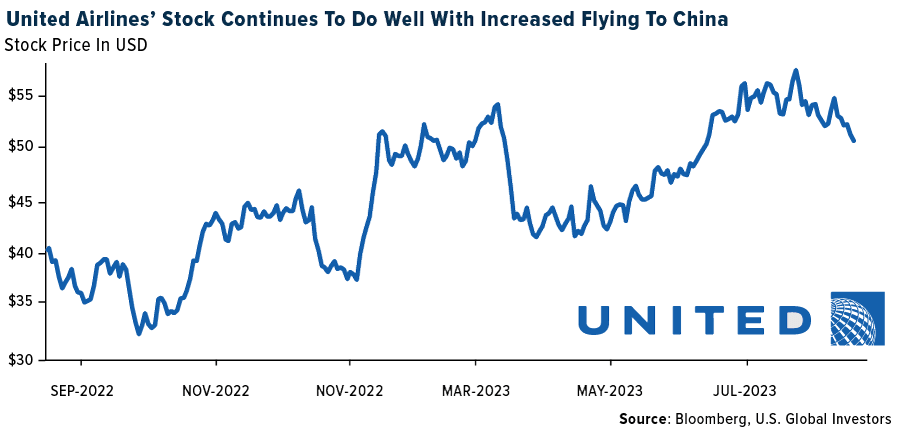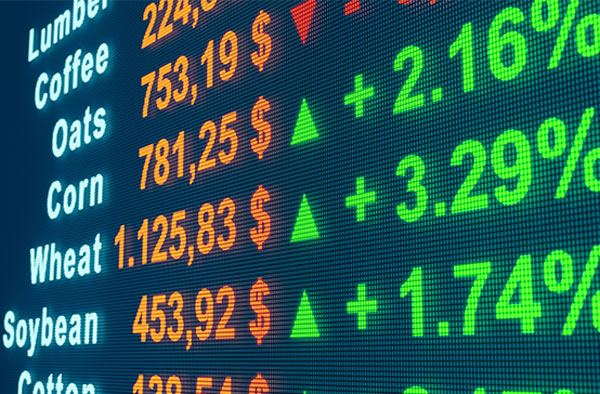
U.S. and EU Airports: A Tale of Two Strategies to Combat Emissions
Air travel is seeing an upswing, with the International Air Transport Association (IATA) forecasting 4.35 billion global passengers carried this year alone.
This resurgence, however, presents an ironic twist. As air travel soars, so does the urgency to reduce emissions—not just in airlines but also airports.
Two global powerhouses, the U.S. and European Union (EU), are navigating this challenge, but their compasses point in very different directions. Whereas the former is investing in new airport infrastructure and modernizing facilities to meet ambitious climate goals, the latter is choosing to combat emissions by restricting the number of flights.
The U.S.: Reimagining Infrastructure
The U.S. is staring at a daunting projection: a 158% increase in passenger traffic by 2040 compared to 2019 levels, according to Airports Council International (ACI). This massive influx demands advanced infrastructure to accommodate passengers, ensure seamless operations, stimulate competition and offer world-class customer experiences. These aren’t mere niceties; they’re necessities, especially if you consider that airports contributed an impressive 7.2% to the U.S. GDP pre-pandemic.
But beyond bracing for this surge, there’s another colossal challenge—the commitment to reducing CO2 and other greenhouse gases.
The Federal Aviation Administration (FAA) recently allocated over $90 million to help 21 U.S. airports achieve zero emissions by 2050. It’s a laudable step, aligning with the 2021 Aviation Climate Action Plan, but a gaping financial abyss remains.
Nevertheless, thanks to the Bipartisan Infrastructure Law, signed in 2021, many U.S. airports are being awarded tens of millions of dollars to upgrade terminal buildings and improve energy efficiency. Among the biggest recipients of federal money is the Dallas-Fort Worth International Airport (DFW), which is getting $25 million to replace an aging HVAC system, install dimmable smart glass in terminal windows and reduce nitrogen oxide (NOx) emissions. A further $10 million is set aside for DFW’s new renewable energy plant, which is on track to deliver 100% net-zero carbon power by 2030.

These grants don’t include the billions that airports are already investing in themselves. The most notable example by far is Los Angeles International (LAX), the fifth-busiest airport in the U.S. and sixth-busiest in the world, which is spending a staggering $30 billion in anticipation of the 2028 Summer Olympics, to be held in LA. It’s believed to be the largest public works program in the city’s history.
Here in San Antonio, home to U.S. Global Investors, the international airport (SAT) is undergoing a $2.5 billion expansion and improvement plan. In addition to getting a third terminal, the airport has plans for a new ground loading facility, which will bolster its capacity. Last month, SAT saw over 1 million passengers, a new record for July traffic.
The European Strategy: Restriction & Redirection
Europe, in contrast, paints a different narrative. While the U.S. leans into infrastructure enhancement and modernization, the EU is nudging its citizens toward alternative modes of transportation.
France stands out in this respect. In May, the country banned domestic, short-haul flights between cities where train alternatives exist. And yet some critics believe this doesn’t go far enough, with some calling for stricter measures such as eradicating flight tax benefits or progressive taxing of frequent fliers.
The same is taking place in the Netherlands. Last month, the Dutch government won a case to cap the number of flights at Amsterdam Airport Schiphol, the country’s main international airport and Europe’s third-busiest airport, having handled 52.5 million passengers in 2022. As a result of the ruling, aircraft movements—defined as the number of arrivals and departures into and out of the airport—will be reduced to 460,000 annually from the current cap of 500,000, before being reduced further to 440,000.
The decision has been met with resistance, as you might expect. Major airlines, including KLM Royal Dutch Airlines, the largest carrier at Schiphol, Delta Air Lines and easyJet, have expressed their disappointment and are advocating for sustainability measures similar to those seen in the U.S.
An Inevitable Crossroads
Both continents aim for the same horizon—a sustainable future for air travel. The difference is that the U.S. is betting on infrastructure improvements and a drive toward modernization, while Europe is gravitating toward shaping traveler habits via regulations and restrictions.
Will the U.S. infrastructure upgrades, with a keen eye on environmental commitments, prove sustainable in the face of rising demand? Conversely, can European restrictions effectively reduce emissions without hampering economic growth and connectivity?
The answers may not be immediate, but as investors, we must remain engaged and informed.

We still like publicly traded airport operator stocks, our favorites being Grupo Aeroportuario del Sureste and Spain-based Aena SME, mainly because they maintain strong moats, or barriers to entry by new competitors. As you can see above, shares of global airlines, as measured by the NYSE Arca Global Airlines Index, and airports, as measured by the 10-member Dow Jones Brookfield Airports Infrastructure Index, are marginally ahead of the market so far this year. Wheels up!
Check out our latest video: 7 Terms to Know When Investing in Airlines

Index Summary
- The major market indices finished down this week. The Dow Jones Industrial Average lost 2.21%. The S&P 500 Stock Index fell 2.11%, while the Nasdaq Composite fell 2.59%. The Russell 2000 small capitalization index lost 3.41% this week.
- The Hang Seng Composite lost 5.37% this week; while Taiwan was down 1.32% and the KOSPI lost 3.35%.
- The 10-year Treasury bond yield rose 9 basis points to 4.252%.
Airlines and Shipping
Strengths
- The best performing airline stock for the week week was Embraer, up 0.6%. Embraer reported its second quarter 2023 results. Adjusted EBITDA was $149 million, which was well above consensus. Main positives included EBITDA margin was 11.5%, up 10 points quarter-over-quarter, top line was $1.3 billion, 23% above consensus, and gross margin on the commercial aviation segment was 12.9%, at the best level since the second quarter of 2022.
- The container shipping spot rate has rallied by 13% since late-June, especially for Asia-Europe, with a 17% increase, and Asia-West Coast/East Coast with 72%/49% increase, respectively. The recent spot rate hike is happening due to three reasons: 1) peak season with cargo volume rebound, with Europe end-market demand bottomed out; 2) shipping lines temporarily reducing capacity by slowing speed and idling ships; 3) Panama Canal drought could absorb 2% of total container shipping capacity.
- After meaningfully underperforming international bookings over the better part of this year, domestic bookings are continuing to recover in recent weeks. On a trailing four-week basis, domestic sales have accelerated nearly 8% compared to international sales at 5% points. This week, however, the rate of growth still favors international, with domestic sales up 7.9% and international up 13.9% year-over-year.
Weaknesses
- The worst performing airline stock for the week was Allegiant, down 9.8%. Eighty-eight Ryanair flights to and from Belgium’s Charleroi airport on August 14-15 were cancelled due to a strike by the airline’s pilots based in the country, according to the airport’s website. The strike is the pilots’ third this summer, after action on July 15-16 and July 29-30, as they seek higher wages and better working conditions.
- Flight activities of the global air freight industry decreased 5.7% year-over-year in July. This is the 16th consecutive year-over-year decline in monthly flight hours. The 12-month moving average hit a new low in July and with underlying leading demand indicators firmly lodged in contraction territories, there is limited visibility into an inflection point in the air freight cycle.
- “Wheels Up,” a provider of on-demand private aviation in the U.S., postponed the release of its financial results last week stating that “absent the ability of the Company to obtain this additional funding in the near-term, the Company has concluded that there is substantial doubt” about its ability to continue operations. The SEC filing also disclosed that Delta Air Lines provided a short-term capital fusion into the company in the form of a secured promissory notes, but the amount of funding was not disclosed.
Opportunities
- The Mexican government is launching a new airline by reviving the Mexicana brand. Per the government, it is leasing 10 737-800s with a single-class, 180-seat layout, and prices 18-20% above current. The primary base will be the Mexico City airport, with the airport under construction in Tulum to be the secondary base.
- DFDS, a Danish international shipping and logistics company, has upgraded 2023 EBITDA guidance from DKK 4.8 billion (bn) to DKK 5.2bn (up from DKK 4.5bn to DKK 5bn previously, with DKK 4.97bn delivered in FY2022), in an unscheduled announcement. The midpoint of the new range is 4% above company-compiled consensus EBITDA of DKK 4.79bn.
- United Airlines is set to increase the number of flights to China. Last week, the U.S. Department of Transportation (DOT) announced that the number of passenger flights between the U.S. and China will double in the coming months, with the first phase starting September 1 and increasing the number of flights from 12 weekly round trips to 18. The second phase will begin October 29, increasing weekly round trips to 24 flights. In response to this announcement, United Airlines will resume daily flights between San Francisco and Beijing this November and reintroduce daily flights to Shanghai from San Francisco starting in October.

Threats
- Cowen does not have an estimate to share on the impact of the Maui fires, but expects it to be meaningful for Hawaiian Airlines (HA). HA and Southwest are offering $19 fares to help people leave the island and the major U.S. airlines are also working to help their passengers return to the mainland. United, for example, flew empty planes (likely with relief supplies) to help their guests leave and American flew wide-body aircraft in from Los Angeles to help evacuate their passengers.
- A severe drought in Panama is leading to unusually long delays and tough restrictions along one of the world’s most important trade routes, illustrating the challenge that climate change poses to global commerce. High temperatures and one of the driest years on record have led authorities in the Central American country, which is usually one of the world’s wettest, to lower the number of crossings and bar ships with heavy loads from using the Panama Canal. The restrictions — rare during Panama’s wet season, which lasts from May to December — have led big carriers including German group Hapag-Lloyd to announce surcharges for routes that rely on the gateway between the Atlantic and Pacific.
- BofA Flight Signals, the group’s proprietary indicator of airline unit revenues six months out, fell to -2.6 for the fourth quarter of 2023 (from +2.5 last quarter). The indicator is now based on year-over-year figures versus 2019 comparisons since the pandemic has been decelerating since the second half of 2022, given higher capacity and lower fuel prices. This indicator shows how unit revenues could trend, and the latest indicator lines up with BofA’s models, suggesting domestic unit revenues could weaken further from -5.9% in the third quarter to -8.1% in the fourth quarter.
Luxury Goods and International Markets
Strengths
- Pandora, a Danish jewelry maker, raised its revenue forecast this week, supported by stronger sales of lab-grown diamonds. On Tuesday, the company announced second-quarter earnings that beat analysts’ estimates, showing full-year sales increasing as much as 5%. Pandora sells synthetic diamonds in the U.S., the UK, and Canada, with the price tag going as high as $4,450 for a 2-carat synthetic diamond rind.
- The Eurozone’s economic sentiment index (ZEW Survey of Expectations) increased to -5.5 in August, the highest in four months, from -12.2 in the previous month. The improvement in expectations of Europe’s economic situation was driven by hopes that interest rates would stop rising in the near future.
- Seoul Auction CO Ltd. was the best performing S&P Global Luxury stock in the past five days, gaining 2.87%, without any important news to report.
Weaknesses
- Tesla sold 64,285 China-made electric cars in July, down 31% from June’s total but up 128% from the same quarter last year. The company reported a 31% decline in sales in mainland China month-over-month. Tesla, once again, cut car prices. Shares traded lower on concerns of further pressure on its profit margins.
- Tapestry, the company that recently announced buying Capri Holdings for $8.5 billion, released weaker-than-expected results. The company reported full-year revenue of $6.9 billion, above last year’s, but below analysts’ estimates of $6.94 billion. After Tapestry’s acquisition of Capri Holdings is finalized next year, it will be the second-largest luxury player behind LVMH in the United States.
- Farfetch Ltd. was the worst performing S&P Global Luxury stock in the past five days, losing 48.82%, after the company reported weak second quarter financials.
Opportunities
- Bank of America’s research team advised investors to overweight consumer discretionary stocks and lower exposure to staples. The broker expects no recession to take place in the United States and predicts a rise in U.S. consumption growth by 100 basis points this year. Because we are at the end of the tightening cycle, this should bode well for consumer discretionary stocks.

- In another research piece from Bank of America this week, highlighting the luxury sector, the group says that Chinese consumers will progressively start spending more offshore. In the second quarter of this year, 20-30% of Chinese luxury spending took place outside of Mainland China versus 60-70% pre-pandemic, highlighting that a large shift offshore is likely still ahead of us. Bank of America believes that the return of Chinese tourism to Europe is the single biggest area of upside potential.
- Aubrey Drake Graham (or “Drake”), a Canadian rapper, singer, and songwriter, gave one lucky concertgoer Wednesday night in Los Angeles a $30,000 Hermès Birkin bag. Drake has been collecting Birkin bags made by Hermes, for years. His collection includes one of the rarest and most expensive bags in the world.
Threats
- China, one of the larger buyers of luxury products and services, continues to release disappointing economic data, with year-over-year sales and industrial production released below market expectations. The property sector remains under pressure after property developer Country Garden recently missed two dollar-dominated payments. The economic turmoil in China could potentially impact European industries, given the interconnection between China’s economic struggles and Europe’s reliance on Chinese consumer spending.
- For quite some time China has been reporting stress among property developers due to weakening sales. Most recently, Germany, Europe’s largest economy and the biggest real estate investment market on the continent, reported some developers becoming insolvent, where new building permits and construction have dropped as residential property prices fell. Both markets are significant buyers of luxury goods and services.
- Next week, preliminary manufacturing data for August will be reported and we’re likely to witness further weakness across different markets, pointing to a slowdown in economic activity. The Eurozone PMI should remain well below the 50 mark (42.7 in July), which separates growth from contraction. Bloomberg economists expect the U.S. Manufacturing PMI to be released at 49, remaining in contractionary territory as well.

Energy and Natural Resources
Strengths
- The best performing commodity for the week was lumber, rising 7.88%, despite the 30-year fixed-rate mortgage hitting 7.09%, the highest in more than 20-years this week. European gas storage levels are 90% full, sitting at the upper end of the 10-year average. EU gas demand remained bearish in July, down 13% year-over-year and 25% below the 2017-2021 average, continually supporting storage injections. Despite this, EU storage is on track to reach full capacity by mid-September with the pace of the refilling being moderate over time, assuming no major supply disruptions.
- According to Goldman, despite the general negativity on the industrial metals complex at the current juncture, the outstanding strength of China’s copper demand remains a key factor in the group’s expectation for outperformance versus the rest of the complex. With the latest full supply chain data now available for June, Goldman sees China copper end demand having risen 3% year-over-year for the month and 9% year-over-year for the first half of 2023.
- Despite iron ore being the most obvious commodity proxy for China’s continued contraction in early cycle property activity – with close to 25% of global seaborne demand tied to that sector in particular – the market has remained relatively tight so far this year. Benchmark iron ore prices, whilst off the local highs, have displayed resilience close to $100 per ton, a level which hardly prices any supply-side margin pressure. This reflects a combination of surging China steel exports and domestic steel scrap tightness.
Weaknesses
- The worst performing commodity for the week was natural gas, dropping 7.26%, on higher production than a year ago and ballooning inventories. Cooler weather is also forecast for next week for both the East and West coast for about 10 days. According to Asian Metals, the spot China carbonate price has moved to 35,000/ton from $42,500/ton at the start of July. According to Benchmark, on the back of the worsening macroeconomic outlook in China, current customer enthusiasm for purchasing EVs has tapered. As such, downstream demand has been relatively subdued.
- According to Goldman, over the past six months, whilst continuing a downward trend, nickel prices have remained volatile. With refined metal inventories at all-time lows, shifting policy expectations have led to short covering rallies, keeping prices range-bound over the past quarter. However, fundamentals have continued to weaken, with the class 2 market moving into greater surplus on weak stainless-steel demand, alongside rising NPI output over the first half of 2022.
- Zinc fell as much as 1.9% as stockpiles tracked by the London Metal Exchange jumped to the highest since April 2022. Historically low stockpiles have supported metals even amid growth headwinds in traditional industrial sectors.
Opportunities
- According to Goldman, barring an actual implementation of strike action impacting LNG supplies, the group expects European gas prices to return to reignite economics for the remainder of summer given how oversupplied NW European gas storage remains. As a result, Goldman keeps its global coal balance views unchanged and reiterates the third quarter forecasts at $129 per ton.
- Cleveland-Cliffs (CLF) made public its intention to acquire U.S. Steel (X) in a cash + stock deal valuing X at $32.53 per share, a 43% premium to last close. X has rejected the offer and announced a strategic review process to seek alternatives. It could create a formidable automotive carbon and electrical steel supplier, lower costs ($500 million of synergies anticipated), improve its FCF profile, and increase competitive positioning versus the ever-rising threat from mini-mill peers. The proposal has been backed by the labor union for both companies.

- Codelco will name its third CEO in a year in the coming weeks as Chile’s state-owned copper company struggles to turn around a slump in output and earnings. With debt at $19 billion and rising, the stakes are getting higher for bondholders.
Production has hit the lowest in a quarter century, costs have surged and ore grades keep on falling, jeopardizing its status as the world’s No. 1 producer. That has sent debt metrics to the worst in years despite copper prices staying more than 20% above the average of the last decade.
Threats
- According to JPMorgan, ex-China lithium production appears to be growing at a slower rate than global demand. However, prices have been falling recently. This implies that Chinese production (around 23% of global supply) could be growing more quickly than anticipated.
- Morgan Stanley’s Global Autos & Shared Mobility research team estimates that a strike involving the Big Three OEMs could impact production volumes by 19,200 units per day. As a general rule of thumb, an average car requires 1 ton of steel; therefore, if a UAW strike involving all Big Three were to occur, it could have a negative impact on steel demand in the second half of the year. If a potential strike were to last for 60 days (in general OEMs’ plants do not run on the weekends), the total impact on U.S. steel demand in 2H23 could be up to 1.2m tons or 2.3%.
- Spot tin prices hit their biggest discount to futures on record on the London Metal Exchange, in a sign of near-term supplies outpacing demand as stockpiles surge.
The discount — a condition known as a contango — reached $280 a ton, the most in data going back to 1994. It marks a stark reversal from sky-high premiums seen earlier in the year, and comes as LME inventories jumped to the highest since 2020 to ease chronic supply constraints seen on the bourse in recent years.
Bitcoin and Digital Assets
Strengths
- Of the cryptocurrencies tracked by CoinMarketCap, the best performer for the week was SEI, rising 1,890.71%.
- Jada AI, an artificial intelligence project that harnesses blockchain technology, has raised $25 million from alternative investment group LDA Capital. The project aims to offer AI services that aid decision-making for organizations and scale up their operations, according to Bloomberg.
- Investors added $49.3 million to crypto-focused exchange traded products (ETPs) during the past month and $232.9 million in the past year, according to data compiled by Bloomberg.
Weaknesses
- Of the cryptocurrencies tracked by CoinMarketCap, the worst performer for the week was CFX, down 28.40%.
- Dubai authorities fined the co-founders of failed crypto hedge fund Three Arrows Capital in their latest enforcement action against the duo’s new digital-asset exchange OPNX. The virtual assets regulatory authority said it had issued the company a fine of 10 million dirhams ($2.7 million) in May that remains unpaid, writes Bloomberg.
- Bitcoin reached an almost two-month low as risk aversion weighs on the cryptocurrency market, with global government bond yields climbing to the highest in about 15 years, writes Bloomberg.

Opportunities
- Coinbase Global Inc. has gained approval to sell cryptocurrency derivatives directly to retail consumers in the U.S. A subsidiary of the U.S.’s biggest crypto exchange, has secured approval from the National Futures Association to operate a Futures Commission Merchant and offer access to crypto futures, writes Bloomberg.
- Traders on Coinbase’s new Base chain have piled over $450,000 into an NFT offering from brand giant Coca-Cola. This is a strong showing despite the fact that major brand NFT launches have consistently demonstrated a lackluster history on secondary markets, writes Bloomberg.
- The U.S. SEC is poised to allow the first exchange-traded funds based on Ether futures, a major win for several firms that long have sought to offer the products, writes Bloomberg.
Threats
- PayPal Holdings won’t allow UK users to buy cryptocurrencies on its platform from October, saying it needs time to ensure compliance with new local rules, writes Bloomberg.
- SwirlLend, a lending project operating on the Ethereum Layer 2 networks Base and Linea, has seemingly executed an exit scam, making off with an estimated $460,000 in user deposits. According to on-chain analysis from security firm PeckShield, the SwirlLend team drained $290,000 in crypto assets from Base and $170,000 from Linea.
- Chinese authorities have charged a Filecoin mining company with running an $83 million pyramid scheme. The local court in Pingnan county in the Guanxi region has announced that criminal proceedings have commenced against Shenzhen Shikongyun Tech, one of China’s largest Filecoin mining companies and its four executives, writes Bloomberg.

Gold Market
This week gold futures closed the week at $1,917.60, down $29.00 per ounce, or 1.49%. Gold stocks, as measured by the NYSE Arca Gold Miners Index, ended the week lower by 6.61%. The S&P/TSX Venture Index came in off 3.46%. The U.S. Trade-Weighted Dollar rose 0.58%.
Strengths
- The best performing precious metal for the week was silver, up just 0.19%. Lab-grown diamond trade data indicates that it continues to gain market share. The value of rough lab grown diamond imports and polished exports increased month-over-month and came in above their three-year average. This suggests that lab-grown diamonds are gaining market share both at mid-stream and end markets.
- Asian ETFs bought $132 million of gold in July, largely propelled by surging Japanese demand with inflows totaling $170 million. The influx of Japanese demand to ETFs can be attributed to local investors seeking refuge in the metal amid concerns of persistent inflation. The World Gold Council (WGC) separately reported that the People’s Bank of China purchased 23 tons of gold in July, the ninth consecutive month of purchasing. June data indicated total central bank gold purchases were net positive in June after several months of net selling.
- Agnico Eagle Mines believes its 2023 production will come in above the midpoint of its guidance range (3.24 million-3.44 million ounces). Additionally, Agnico is confident it will be able to get its costs below the midpoint of its guidance range (all-in sustaining cost: $1,140-$1,190 per ounce). For the third quarter, the company is expecting higher costs due to mine sequencing and grade with the costs expected to decline into the fourth quarter. Management noted that costs are stabilizing with the easing of inflationary pressures due to fewer supply chain issues and the return to normal after the pandemic. Additionally, Agnico is benefiting from the weakness of the Canadian dollar and from lower diesel prices relative to forecast.
Weaknesses
- The worst performing precious metal for the week was palladium, down 4.09% in contrast to money managers reducing their net bearish positions to a three-week low. Spot gold was on track for a positive gain this week in its price, but the Federal Reserve Minutes from the July meeting suggested they are more likely to continue to raise rates to push inflation down further.

- Impala Platinum Holdings published a weak trading statement, supplementing its previous update. Impala guides FY23 earnings per share (EPS) Rc2,117-2,352 per share, a miss to company-compiled consensus Rc2,642 per share. Earnings have been impacted by lower achieved metals prices (-18% year-over-year), partly offset by a weaker South African rand. In addition, load curtailment resulted in 147,000 ounces lost refined volumes, which has negatively impacted sales. Cash costs in FY23 have been impacted by higher inflation and a weaker rand impact on translated costs. Basic earnings have been impacted by impairments at Impala Canada (R7.8bn due to a weaker palladium price profile plus inflation) and RBPlat (R4.2bn goodwill impairment related to RBP acquisition).
- Gold fell below $1,900 an ounce as the minutes of the Fed’s July meeting showed that more interest rate hikes are likely to come. Fed officials at their last meeting largely remained concerned that inflation would fail to recede and suggested they may continue raising rates. The dollar rose to a fresh two-month high while Treasury yields held gains after the release, weighing on bullion.
Opportunities
- The new IamGold CEO highlighted the following priorities for the company: (1) the successful completion of the Côté Gold Project, including production starting early in the first quarter of 2024 and the successful ramp-up into 2024; (2) continuing to operate safely and turning the corner at Essakane; (3) building and growing a strong Canadian platform, including positioning Westwood to achieve free cash flow toward the end of 2023; (4) returning to its full 70% interest in the Côté Gold project; and (5) utilizing future cash flow to optimize and have a more balanced capital structure. Despite the string of positive news, IamGold share price has fallen for nine consecutive days, its longest streak in 23 years, according to Bloomberg.
- Orexplore Technologies is a mineral scanning technology company that is trying to disrupt the months of lost time wasted by mining companies that rely on conventional lab assaying, which destroys half of the drill core, to determine metal concentrations within the rock. Orexplore scans the surface of the entire core to measure metal concentrations and can determine ore grades for a one-meter length of core in 15 minutes. This dramatically improves the productivity of mineral exploration and resources estimation. BHP Group signed an agreement with Orexplore to deploy the technology at their Carrapateena mine in South America this week.
- Silvercorp Metals acquired 84% of the Nyanzaga project in northwestern Tanzania, a high-grade construction-ready project in a proven gold mining jurisdiction. The implied $160 million transaction value represents just 0.23x NAV, and as such, this project is extremely accretive.
Threats
- Production at Victoria Gold Corp. is expected at the lower end of guidance with recent wildfires. The Eagle Mine was recently evacuated twice due to the East McQuesten wildfire. Operations are expected to fully resume shortly as personnel are starting to return to site. Production is now expected at the lower end of annual guidance (160,000-180,000 ounces), which has been reiterated but may be adjusted depending on the situation. Victoria’s share price slid to its lowest close since April 2020, according to Bloomberg.
- Goldman’s rates strategists believe that if growth next year is near potential, and the unemployment rate close to lows, the Federal Open Markets Committee (FOMC) may not view preemptive easing as prudent. Furthermore, while the central banks have returned as net buyers in June following three months of selling, ETF holdings have continued to fall on better U.S. growth data. Near term, they remain neutral on gold, with their strategists arguing for stickier yields and dollar levels given U.S. outperformance in clear display against a backdrop of limited foreign monetary policy support and weak Chinese economic data.
- Fed officials at their last meeting largely remained concerned that inflation would fail to recede and suggested they may continue raising interest rates. “Most participants continued to see significant upside risks to inflation, which could require further tightening of monetary policy,” according to minutes of the U.S. central bank’s July 25-26 policy meeting published Wednesday in Washington. “Some participants commented that even though economic activity had been resilient and the labor market had remained strong, there continued to be downside risks to economic activity and upside risks to the unemployment rate,” the Fed said.


U.S. Global Investors, Inc. is an investment adviser registered with the Securities and Exchange Commission (“SEC”). This does not mean that we are sponsored, recommended, or approved by the SEC, or that our abilities or qualifications in any respect have been passed upon by the SEC or any officer of the SEC.
This commentary should not be considered a solicitation or offering of any investment product. Certain materials in this commentary may contain dated information. The information provided was current at the time of publication. Some links above may be directed to third-party websites. U.S. Global Investors does not endorse all information supplied by these websites and is not responsible for their content. All opinions expressed and data provided are subject to change without notice. Some of these opinions may not be appropriate to every investor.
Holdings may change daily. Holdings are reported as of the most recent quarter-end. The following securities mentioned in the article were held by one or more accounts managed by U.S. Global Investors as of (06/30/2023):
Embraer
Ryanair Holdings
Delta Air Lines
United Airlines
Hawaiian Airlines
Southwest Airlines
Hapag-Lloyd AG
Tesla
LVMH
Air France-KLM S.A.
easyJet PLC
Grupo Aeroportuario del Sureste, S.A.B. de C.V.
Aena SME S.A.
Agnico Eagle Mines Ltd.
Impala Platinum Holdings Inc.
IAMGOLD Corp.
Orexplore Technologies Ltd.
Silvercorp Metals Inc.
*The above-mentioned indices are not total returns. These returns reflect simple appreciation only and do not reflect dividend reinvestment.
The Dow Jones Industrial Average is a price-weighted average of 30 blue chip stocks that are generally leaders in their industry. The S&P 500 Stock Index is a widely recognized capitalization-weighted index of 500 common stock prices in U.S. companies. The Nasdaq Composite Index is a capitalization-weighted index of all Nasdaq National Market and SmallCap stocks. The Russell 2000 Index® is a U.S. equity index measuring the performance of the 2,000 smallest companies in the Russell 3000®, a widely recognized small-cap index.
The Hang Seng Composite Index is a market capitalization-weighted index that comprises the top 200 companies listed on Stock Exchange of Hong Kong, based on average market cap for the 12 months. The Taiwan Stock Exchange Index is a capitalization-weighted index of all listed common shares traded on the Taiwan Stock Exchange. The Korea Stock Price Index is a capitalization-weighted index of all common shares and preferred shares on the Korean Stock Exchanges.
The Philadelphia Stock Exchange Gold and Silver Index (XAU) is a capitalization-weighted index that includes the leading companies involved in the mining of gold and silver. The U.S. Trade Weighted Dollar Index provides a general indication of the international value of the U.S. dollar. The S&P/TSX Canadian Gold Capped Sector Index is a modified capitalization-weighted index, whose equity weights are capped 25 percent and index constituents are derived from a subset stock pool of S&P/TSX Composite Index stocks. The NYSE Arca Gold Miners Index is a modified market capitalization weighted index comprised of publicly traded companies involved primarily in the mining for gold and silver. The S&P/TSX Venture Composite Index is a broad market indicator for the Canadian venture capital market. The index is market capitalization weighted and, at its inception, included 531 companies. A quarterly revision process is used to remove companies that comprise less than 0.05% of the weight of the index, and add companies whose weight, when included, will be greater than 0.05% of the index.
The S&P 500 Energy Index is a capitalization-weighted index that tracks the companies in the energy sector as a subset of the S&P 500. The S&P 500 Materials Index is a capitalization-weighted index that tracks the companies in the material sector as a subset of the S&P 500. The S&P 500 Financials Index is a capitalization-weighted index. The index was developed with a base level of 10 for the 1941-43 base period. The S&P 500 Industrials Index is a Materials Index is a capitalization-weighted index that tracks the companies in the industrial sector as a subset of the S&P 500. The S&P 500 Consumer Discretionary Index is a capitalization-weighted index that tracks the companies in the consumer discretionary sector as a subset of the S&P 500. The S&P 500 Information Technology Index is a capitalization-weighted index that tracks the companies in the information technology sector as a subset of the S&P 500. The S&P 500 Consumer Staples Index is a Materials Index is a capitalization-weighted index that tracks the companies in the consumer staples sector as a subset of the S&P 500. The S&P 500 Utilities Index is a capitalization-weighted index that tracks the companies in the utilities sector as a subset of the S&P 500. The S&P 500 Healthcare Index is a capitalization-weighted index that tracks the companies in the healthcare sector as a subset of the S&P 500. The S&P 500 Telecom Index is a Materials Index is a capitalization-weighted index that tracks the companies in the telecom sector as a subset of the S&P 500.
The Consumer Price Index (CPI) is one of the most widely recognized price measures for tracking the price of a market basket of goods and services purchased by individuals. The weights of components are based on consumer spending patterns. The Purchasing Manager’s Index is an indicator of the economic health of the manufacturing sector. The PMI index is based on five major indicators: new orders, inventory levels, production, supplier deliveries and the employment environment. Gross domestic product (GDP) is the monetary value of all the finished goods and services produced within a country’s borders in a specific time period, though GDP is usually calculated on an annual basis. It includes all private and public consumption, government outlays, investments and exports less imports that occur within a defined territory.
The S&P Global Luxury Index is comprised of 80 of the largest publicly traded companies engaged in the production or distribution of luxury goods or the provision of luxury services that meet specific investibility requirements.
The Dow Jones Brookfield Airports Infrastructure Index is a global index that is designed to measure the performance of pure-play infrastructure companies in the airports sector.
The NYSE Arca Global Airline Index is a modified equal dollar-weighted index designed to measure the performance of highly capitalized and liquid international airline companies.






























